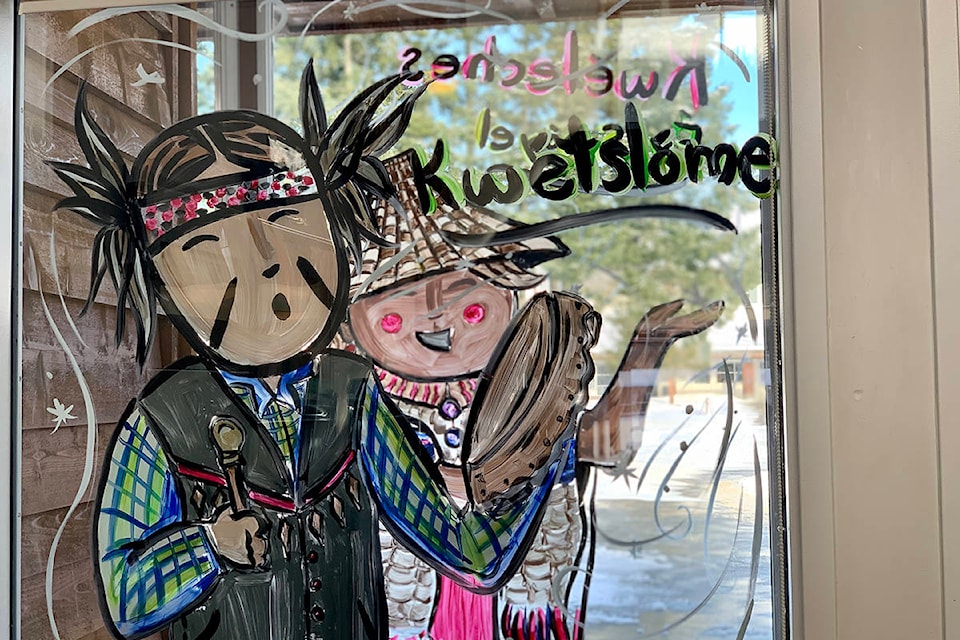The “Baby Shark” children’s song that took social media by storm since its release in 2016 is enjoying a revival at the school.
Education assistant Kaitlynn Muir decided to harness the popularity of the song, about a family of sharks, to teach Halq’eméylem, the language of the Sto:lo people.
“It sounds quite simple,” curriculum developer Dianna Kay said of Muir’s work. “But what happens is the students are learning the words for ‘,mom’ ‘dad,’ stuff like that.”
The educational cover song is part of a larger partnership between the school and UFV to revitalize the Halq’emeylem language, which only has one surviving fluent speaker.
RELATED: Sts’ailes invites adults to become engaged in Halq’eméylem with new video series
| Seabird Island Community School education assistant Kaitlynn Muir, pictured at the school on Jan. 17, 2020, created a matching game based on the viral “Baby Shark” children’s song to help teach students Halq’eméylem words for family members. (Karissa Gall/The Observer) |
The school has had Halq’eméylem words painted on the walls and displayed on posters in classrooms for years, however, Kay said the new partnership is meant to further incorporate the language into classroom activities.
It began when the school signed a contract in August 2019, to have UFV professor Mary Stewart travel to Seabird Island once a week after school and teach about 20 staff how to speak Halq’eméylem. Staff are incentivized to participate, Kay said, because they will be able to earn an Advanced Proficiency Certificate in Halq’emeylem from UFV, and attend a graduation ceremony planned for sometime in June 2020.
To teach Halq’eméylem, Kay said Stewart uses gestures — a technique of the accelerative integrated methodology — and incorporates technology by having staff manipulate words on an interactive whiteboard.
“Not too many people are doing that with Indigenous languages,” Kay said.
Since Stewart started teaching the weekly classes in September 2019, Kay said staff have already improved their knowledge.
“The learning curve has just been straight up,” agreed education assistant Kori Tait. “And to be able to not have to drive [to UFV] to take classes is amazing.”
| Seabird Island Community School education assistant Kori Tait holds up a flashcard with the Halq’emeylem words for "What time is it?" at the school on Jan. 17, 2020. Since September 2019, Tait has been enrolled in the weekly after-school Halq’eméylem language classes being taught on Seabird Island by UFV professor Mary Stewart. (Karissa Gall/The Observer) |
Teachers taking the course are already using more Halq’eméylem words when verbalizing common teacher commands, such as “sit,” and at transition times, such as moving desks or turning a page over.
One teacher, Brandy McCallum, also painted the front windows of the school with a Sto:lo woman and the Halq’eméylem greeting “Éy swáyel,” which translates to “Good day” in English, as well as a Sto:lo man with the Halq’eméylem words for “later.”
“It’s really exciting to see,” Kay said, adding that ultimately, the school hopes to teach entirely in Halq’eméylem. “In order for us to get there we have to crawl before we can walk, and walk before we can run.”
RELATED: Breathing life into Halq’eméylem
